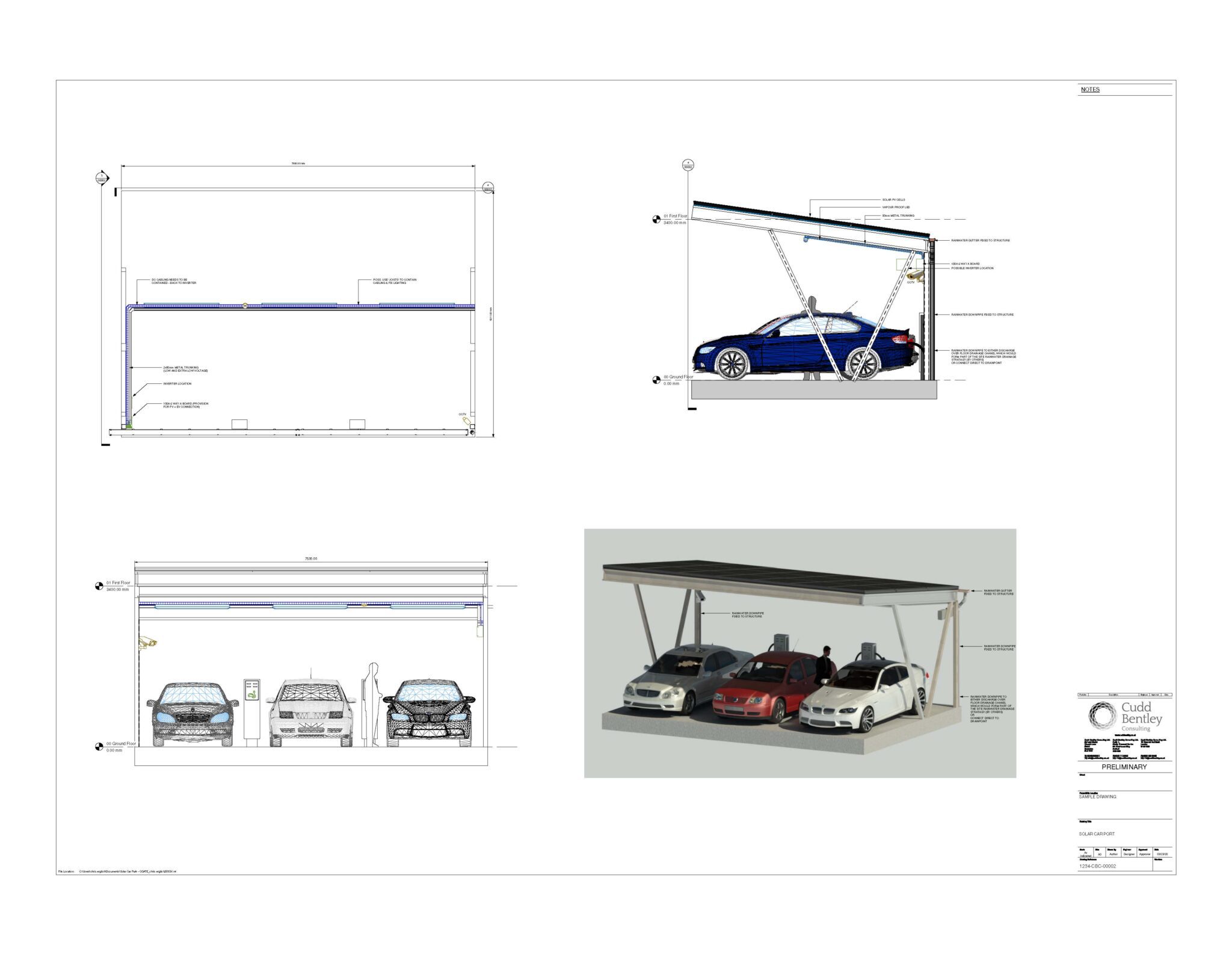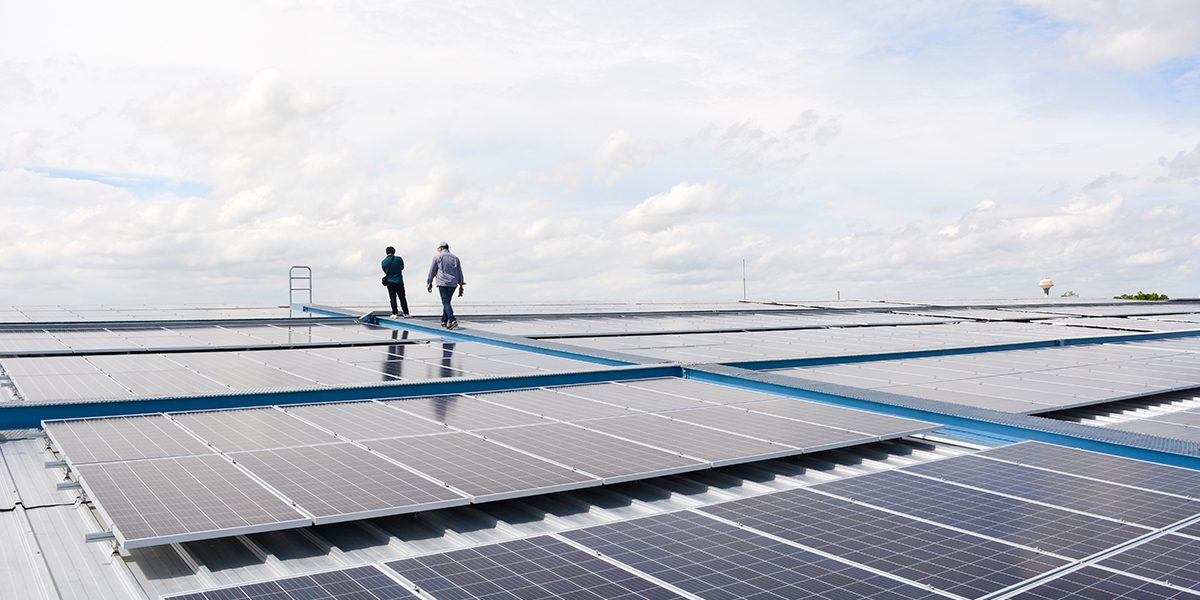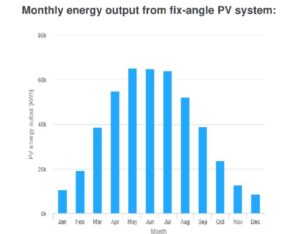How does my Photovoltaic (PV) System Work?
PV is the acronym used to describe a photovoltaic system array. PV is a light sensitive panel used to ‘collect’ the power of sunlight (photons) and convert this into useful electrical energy that may be utilised within a given electrical infrastructure.
This generated electrical energy is then utilised to supplement and/or offset some usage from the fixed utility company operated electricity network. In doing so this allows the development or property onto which the PV array is connected to reduce its carbon footprint.

BASIC SYSTEM OVERVIEW
The following section provides a simple step by step description of the process of electrical generation from a typical PV array:
- A typical PV collection panel will receive the Photons of sunlight as they hit the top layer of the solar cells, causing electrons to move down through the lower layers of the This movement creates direct current (DC) electricity.
- The DC electricity flows from the solar panels through the PV cables to an inverter which will convert the DC energy to mains compatible alternating current (AC) electricity.
- The inverter will monitor the grid supply and ensure that the solar energy matches the grid and is suitably synchronised. The inverters are also monitoring for any disruptions to the power supply.
- The AC electricity that has been generated and inverted, is now ready to be used in the property and is generally configured to feed directly into the distribution panel, from where it is distributed along with imported energy (from the utility company) to power the equipment within your building.
- The energy generated is monitored and it is easy to demonstrate the carbon reduction of the property’s energy usage. Cudd Bentley recommends the installation of an LED display, perhaps located in a visible position in a reception area, allowing staff and visitors to see the carbon efficiency that is being delivered.
- If at certain time of the day, the system is generating more energy than needed by the property, any surplus will be fed back (exported) into the utility company supply grid. Conversely, at night and when solar generation doesn’t meet demand, electricity is provided by the grid. An improvement on the above system would be the inclusion of energy storage facilities (batteries) which can be utilised to help meet nightly demands with the use of the stored energy.

FREQUENTLY ASKED QUESTIONS
When the PV panel generates electricity, where does it go?
When electricity is produced by the photovoltaic panels, it is used in one of two ways.
- If there is demand in the building, then the electricity produced by the panels will be used to help light, heat, and power your building offsetting some of the electricity demand from the electricity grid. This means that you are saving on paid electricity, as well as reducing the carbon usage of the property.
- If there is no demand in the building (e.g. it is unoccupied) the panels still produce power, and instead of it being wasted, it goes back to the electricity grid. There will be no financial benefit for you as the Customer for the generation back to the grid.
Excess electricity can be stored in batteries. This technology is evolving.
Will I generate money from my PV system?
No, only the saving is that of using less electricity from the grid. Unfortunately, the historic Feed-in-Tariff scheme through which building users generated additional money was closed in 2019.
Where is my PV system installed?
The PV panels are generally installed on the roof of your building, orientated in so far as is practical to maximise sunlight collection. In addition to the panels there is an inverter which may be mounted internally to the property or externally. You should refer to the buildings Operation and Maintenance Manual for the locations and type of system you have.
Is there space for more PV on my roof?
Potentially there is space for more PV however, a survey should be carried out by your installer to understand the available space and capacity within your system. Furthermore, the structural capacity of the roof will need to be considered by a Structural Consulting Engineer, due to the weight of the additional PV system.
When are my PV’s most efficient?
What does the size of my panel mean?
The size of a PV panel does change as efficiencies improve but currently the peak rating of a standard panel would be 200Wp/m2 (so a 5m2 system = c. 1kWp). Depending on location, inclination, orientation, shading etc the amount of energy each kWp will generate will differ but as an average 1kWp of PV will generate c. 800kWh/Yr
What is ‘Smart Export Guarentee’ (SEG)?
The Smart Export Guarantee is a requirement for big energy suppliers to buy back surplus renewable energy from small scale generators. It requires that the building has a meter capable of reading electricity exported from the building (could be a bi-directional main meter or a separate meter) and that the meter has an export MPAN. There are no set or minimum tariffs for the SEG – the only requirement is that the tariff must be greater than zero at all times. A typical industrial building will not have a secondary meter unless specifically asked for by the incoming occupier.




